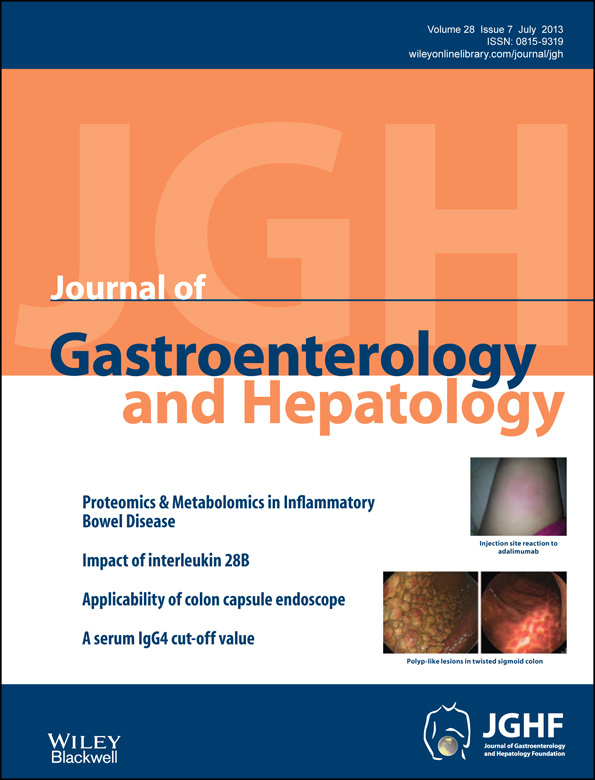Paeonol inhibits hepatic fibrogenesis via disrupting nuclear factor-κB pathway in activated stellate cells: In vivo and in vitro studies
Abstract
Background and Aims
Hepatic fibrosis represents a major cause of morbidity and mortality worldwide. The present study was to evaluate the antifibrogenesis effect of paeonol and involved mechanisms.
Methods
The degree of liver injury was evaluated biochemically by measuring serum and fibrotic markers and pathological examination. Cell viability was evaluated by 3-(4,5-dimethylthiazol-2-yl)-2,5-diphenyltetrazolium bromide assay and trypan blue staining. Cytotoxic effects were determined using lactate dehydrogenase release assay. Cell cycle was determined using single dyeing methods of propidium iodide (PI) by flow cytometry. Apoptosis was confirmed using double-staining of annexin V/PI and Hoechst. Western blot, immunofluorescence and real-time polymerase chain reaction were used to explore the molecular mechanisms.
Results
Treatment with paeonol significantly protected the liver from injury by reducing the activities of serum aspartate aminotransferase, alanine aminotransferase, improving the histological architecture of the liver, and by inhibiting activation of hepatic stellate cells (HSCs) in vivo. Interestingly, paeonol had no apparent cytotoxic effects but could markedly inhibit primary HSC proliferation and induced HSC cell cycle arrest at the G2/M checkpoint. These effects were caused by paeonol suppression of phosphorylation of cycle protein cdc2 and of CDK2. Moreover, that paeonol triggered mitochondrial apoptosis pathway and led to activation of caspase cascades in HSCs was found. Mechanistic investigations revealed that the nuclear factor-κB (NF-κB) pathway inhibition resulted in the earlier events. Furthermore, paeonol altered the expression of some marker proteins relevant to HSCs activation.
Conclusion
Paeonol could inhibit HSC proliferation and induce mitochondrial apoptosis via disrupting NF-κB pathway, which might be the mechanisms of paeonol reduction of liver fibrosis.




